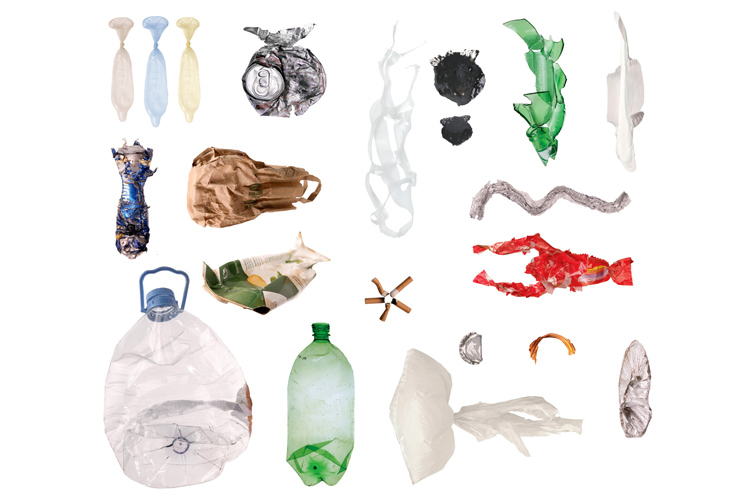How long until it's gone? Discover the estimated decomposition rates of the most common types of marine debris.
Garbage, litter, trash. Our oceans and coastal lines have been invaded by thousands of small, medium, and large pieces of unwanted man-made products.
Nature is not able to decompose everything humans produce. The rate at which these materials break down in the marine environment varies widely.
Taking care of our trash is critical if we still want to ride waves in crystal clear blue waters.
The Plastics Predicament: How Long Do They Persist?
The durability and versatility of plastic have made it a staple in our everyday lives, but these same attributes also make it one of the most harmful types of marine debris.
Plastics take an estimated 450 years to decompose, but in reality, this decomposition merely breaks the plastic down into microplastics - tiny particles less than 5mm in size.
These microplastics continue to persist indefinitely, posing threats to marine life and potentially entering the human food chain.
- PET bottles: Polyethylene terephthalate (PET) is commonly used in the manufacturing of drink bottles. These take approximately 450 years to decompose in a marine environment;
- Plastic bags: These everyday items can take between 10 to 1000 years to degrade, with an average decomposition rate of 20 years;
- Plastic straws: Lightweight and often discarded irresponsibly, plastic straws can take up to 200 years to decompose;
Metal, Glass, and Beyond: The Longevity of Other Marine Debris
While plastics undoubtedly dominate discussions of marine debris, other common items also contribute significantly to this environmental issue.
- Aluminum cans: Despite being recyclable, many aluminum cans still end up in our oceans. They take around 200 years to decompose fully;
- Glass bottles: These items are among the longest-lasting marine debris, with a decomposition rate of approximately 1 million years;
- Paper products: Decomposition rates for paper products in marine environments are considerably faster. They can break down in as little as two weeks to two months, depending on factors like thickness and coating;
But let's take a look at how much time is needed to decompose marine debris items put aside by contemporary societies:
- Orange/Banana Peel: 2-5 weeks
- Paper Towel: 3-4 weeks
- Newspaper: 6 weeks
- Cotton Ropes: 1-5 months
- Apple Core: 2 months
- Cardboard Box: 2 months
- Cotton Shirt: 2-5 months
- Waxed Carton: 3 months
- Photo-Degradable Beverage Holder: 6 months
- Plywood: 1-3 years
- Wool Socks: 1-5 years
- Cigarette Butt: 1-5 years
- Plastic Grocery Bag: 10-20 years
- Plastic film Canister: 20-30 years
- Condom: 30 years
- Styrofoam Cup: 50 years
- Foamed Buoy: 50 years
- Tin Can: 50 years
- Leather: 50 years
- Rubber Boat Sole: 50-80 years
- Aluminum Can: 200 years
- Plastic Beverage Holder: 400 years
- Plastic Bottle: 450 years
- Disposable Diaper: 450 years
- Fishing Line: 600 years
- Glass Bottle: 1 million years
The Impact of Decomposition Rates on Marine Life
The longevity of marine debris has significant implications for marine life. Animals can become entangled in debris or ingest it, leading to injury and often death.
The slow decomposition rate of plastic increases the likelihood of these harmful encounters.
Microplastics, the result of decomposed plastics, are ingested by a wide variety of marine organisms, from tiny plankton to large whales.
This ingestion can cause internal injury and starvation (as debris fills the stomach, leaving no room for food) and also potentially transfer harmful pollutants to these organisms.
Tackling the Marine Debris Issue: Practical Solutions
Understanding the long-term persistence of marine debris can inform strategies for managing this environmental problem.
- Recycling: Encouraging recycling, especially of items like plastic, aluminum cans, and glass bottles, can significantly reduce the volume of debris entering our oceans;
- Reduction and Reuse: Minimizing our reliance on disposable items and embracing reusable alternatives can prevent potential marine debris at its source;
- Cleanup efforts: Beach cleanups and similar initiatives can help to remove debris that has already entered the marine environment, reducing its potential to harm wildlife;
The decomposition rates of common marine debris items illustrate a grim picture of persistent pollution in our oceans.
Yet, understanding these rates can empower us to make informed decisions and choose behaviors that mitigate our contributions to marine debris.
By reducing, reusing, recycling, and participating in cleanup efforts, we can help to combat this pressing environmental issue.
Help the planet. Say no to plastic bags, and collect a single marine debris item every time you leave the beach after a surf session.
